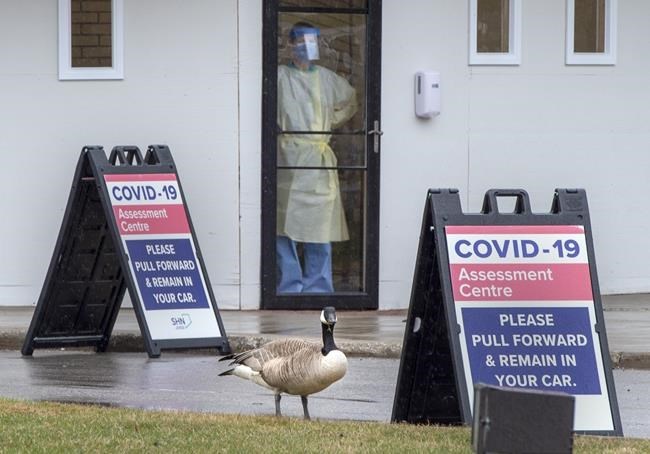They came, they honked, they conquered.
Flying in their signature V-formation, Canada geese are often hailed as a symbol of the Canadian wilderness, marking the change of seasons with their southern migration each winter and return every spring.
In recent decades, however, "honkers" have been derided as urban pests as the big, black-necked birds overran new habitats across North America, where in some cases, they've taken up residence year-round.
This has given rise to a contentious coexistence: Gaggles of geese swarm public grounds, scattering their droppings across parks and beaches. There are clashes between protective mother geese and unwitting human intruders who stray too close to their nests. Between crop losses and car crashes, one province pegs the cost of goose-related damage at hundreds of thousands of dollars per year.
As Canada Day approaches, experts say we have no one but ourselves to blame for the proliferation of Canada's avian agitators, so ultimately, it's up to us to find a way to live in peace.
"Canada geese are very polarizing," said Christopher Sharp, a population management biologist with the Canadian Wildlife Service in the Ontario region.
"Because there's a lot of people who hate them ... but there's also a lot of people who still have a soft spot for Canada geese."
Prior to European colonization, the historical nesting grounds of Canada geese was limited to southwest Ontario and the southern Prairies.
By the turn of the 20th century, Sharp said unregulated hunting drove Canada geese to the brink of extinction from these native habitats.
This prompted a concerted effort by wildlife officials and amateur aviculturalists, who bred the birds on their homesteads, to boost the numbers of Canada geese, sometimes introducing them to new areas.
This mission, enshrined in the Migratory Birds Convention between Canada and the U.S. in 1916, coincided with human changes to the natural landscape that would prove to be a boon to the savvy birds, said Sharp.
As forests were razed in favour of commercial crops and manicured lawns and waterfronts, Sharp said Canada geese flocked to these open pastures and "urban refuges" with an abundant supply of food and relatively few predators.
Today, there are an estimated seven million Canada geese living in North America, according to the Canadian Wildlife Service.
In regions with mild climates in much of the U.S. and some parts of Canada, so-called "resident geese" have gotten so comfortable that they've stopped migrating to breed and instead stay in the same place throughout the year.
What's good for the goose, however, isn't always good for their human neighbours, said Sharp. As the population of Canada geese has boomed, so too has the prevalence of "human-goose conflict."
"Geese are just doing what geese do," said Sharp.
"It's only when you throw humans in the mix that there's conflict."
Frank Baldwin, a wildlife biologist with the Canadian Wildlife Service in Manitoba, said the consequences of these conflicts can range from disturbance to damage to danger.
According to the Manitoba Agricultural Services Corporation, crop damage by Canada geese resulted in an average annual compensation claims of more than $416,000 from 2015 to 2018.
That doesn't account for other types of property damage, Baldwin noted, or public nuisances caused by high concentrations of geese, such as noise concerns, droppings and water quality.
Geese can also become aggressive when they believe their nests are under threat, which can cause serious injury, Baldwin said.
They can also be a traffic hazard, he said. From 2015 to 2018, an annual average of approximately $372,528 in car crash claims in Manitoba could be attributed to Canada geese, according to Manitoba Public Insurance.
Canada geese also pose risks to aircraft, said Baldwin. For example, the birds have been blamed for bringing down the jetliner that Chesley "Sully" Sullenberger safely landed on New York's Hudson River in 2009.
At current growth rates, the number of Canada geese in Manitoba could double in eight years, despite population control efforts such as loosening hunting regulations and egg sterilization programs.
The Canadian Wildlife Service has put forward a proposal to designate temperate-breeding Canada geese in southern Manitoba as "overabundant," meaning their population size is considered detrimental to the conservation of other migratory birds, as well as agricultural, environmental or other interests.
The move would also establish a spring hunting season for Canada geese with a daily bag limit of eight.
Sharp, the wildlife biologist in Ontario, said the province isn't considering such drastic measures yet.
The growth rate of the Canada goose population in southern Ontario has levelled off since the mid-2000s, he said.
He noted wildlife officials in the province are working on strategies to reduce clashes between humans and geese in urban areas where hunting is not allowed.
Between education and habitat modification, Sharp believes there's potential for waterfowl and city-dwellers to live more harmoniously.
At the risk of anthropomorphism, he admits that Canadians may have more in common with Canada geese than they think.
They provide a connection to nature amid a concrete jungle, and are harbingers of warm weather to come, he said.
Canada geese are social, family-oriented and mate for life (at least to some degree), Sharp said.
"They're good parents, and these things that humans try to be," said Sharp.
"I'm a biologist for crying out loud. And still, just looking at them interact, it's hard not to say, 'They're thinking what I'm thinking.'"
This report by The Canadian Press was first published June 30, 2020.
Adina Bresge, The Canadian Press

